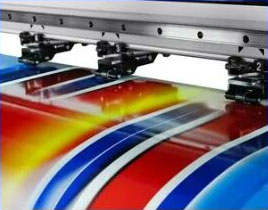Unraveling the Impact of Molecular Structure: Monofunctional Acrylate Monomers in Coatings, Adhesives, and Medical Devices
2024-05-08
Introduction:
In the intricate world of polymer chemistry, the molecular structure of monofunctional acrylate monomers holds profound implications for their reactivity and suitability in diverse industrial applications. From coatings and adhesives to medical devices, understanding how the molecular architecture of these monomers influences their performance is essential for optimizing formulations and achieving desired properties. Let's delve into the fascinating interplay between molecular structure, reactivity, and application suitability of monofunctional acrylate monomers across various industries.
Reactivity and Molecular Structure:
The molecular structure of monofunctional acrylate monomers, characterized by a single reactive double bond (C=C), profoundly impacts their reactivity and polymerization behavior. Key factors influenced by molecular structure include:
1. Polymerization Kinetics:
Monofunctional acrylate monomers exhibit relatively straightforward polymerization kinetics due to their single reactive site. This simplicity allows for precise control over reaction rates and polymerization processes, facilitating the production of polymers with tailored properties.
2. Chain Length and End-Group Functionality:
The molecular structure of monofunctional acrylate monomers influences chain length and end-group functionality in polymer chains. Linear polymer chains are typically formed, with each chain terminated by a single functional group, imparting specific properties to the resulting polymer.
3. Degree of Crosslinking:
In certain formulations, monofunctional acrylate monomers contribute to the formation of lightly crosslinked polymer networks. The degree of crosslinking depends on factors such as monomer concentration, polymerization conditions, and the presence of crosslinking agents, impacting the mechanical and thermal properties of the final product.
Applications in Coatings, Adhesives, and Medical Devices:
The unique reactivity and molecular structure of monofunctional acrylate monomers render them well-suited for a wide range of industrial applications, including:
1. Coatings:
Monofunctional acrylate monomers are commonly utilized in coating formulations due to their excellent adhesion, flexibility, and weather resistance. Their ability to form linear or lightly crosslinked polymer chains enables the production of coatings with tailored properties, suitable for applications ranging from automotive finishes to architectural paints.
2. Adhesives:
In adhesive formulations, monofunctional acrylate monomers contribute to bonding strength, tackiness, and flexibility. Their simplified reactivity and ability to form linear polymer chains facilitate the production of adhesives with controlled viscosity, curing profiles, and adhesion properties, making them ideal for applications in packaging, construction, and electronics.
3. Medical Devices:
Monofunctional acrylate monomers find applications in the fabrication of medical devices, such as biocompatible coatings, adhesives, and implantable materials. Their low cytotoxicity, biocompatibility, and ability to form hydrophilic or hydrophobic surfaces make them suitable for use in wound dressings, surgical adhesives, and implant coatings, facilitating tissue integration and compatibility with biological systems.
Conclusion:
The molecular structure of monofunctional acrylate monomers exerts a profound influence on their reactivity and suitability for specific industrial applications. From coatings and adhesives to medical devices, understanding the interplay between molecular architecture and application requirements is essential for formulating high-performance materials tailored to meet diverse industry needs. By harnessing the unique properties of monofunctional acrylate monomers, researchers and formulators can unlock new opportunities for innovation and advancement across a wide range of industries, paving the way for enhanced performance, functionality, and sustainability in polymer-based products.


